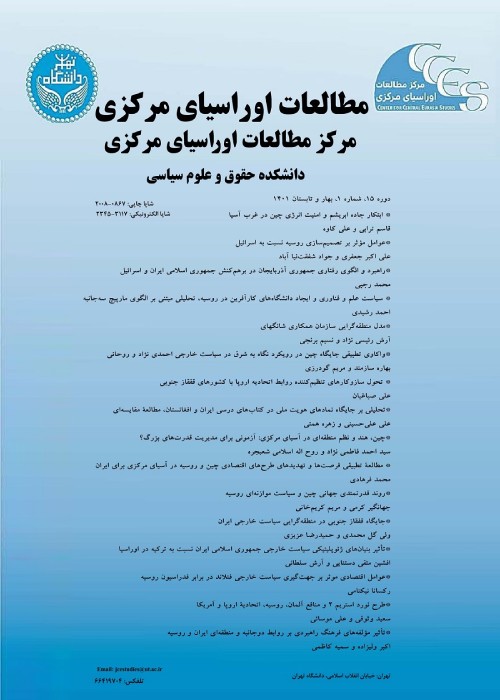The Role of Energy Exports in the Development of Turkmenistan-India Relations
This research examines the possibility of developing relations between Turkmenistan and India in the field of gas export. With the increasing desire of countries to use natural gas to meet their energy needs, India has also focused its gas energy policies to increase the use of natural gas. Major limitations appeared with the expansion of coal and oil consumption; as a result, natural gas is at the top of the global energy portfolio. At least, in the medium term, India is heavily dependent on gas to meet its needs. In the most optimistic scenario, in 2025, India will be able to meet about 42% of its gas needs from domestic sources, and as a result, most of the natural gas will be extracted through imports.
Research question:
The main question is what effects has natural gas had on India-Turkmenistan relations?
Research hypothesis:
The hypothesis of this research is based on the fact that regardless of the limitations of the pipeline construction, the TAPI can provide the context of mutual dependence and the development of economic relations between the two countries.
Methodology and theoretical framework:
In this research, the qualitative research method to examine the hypothesis is based on Gavan Duffy’s pragmatic analysis method. Data collection tools are libraries and internet resources. The theoretical framework of the proposed research is Cohen and Nye's theory of interdependence in the complex era of globalization, which is used in this research.
The analyzses carried out in this research show that Turkmenistan is located in the Central Asian region, which has the largest oil and gas reserves. According to British Petroleum Statistics, Turkmenistan’s gas reserves were 13.6 trillion cubic meters in 2020, followed by Russia with 37.4 trillion cubic meters of reserves. Turkmenistan ranks second among Central Asian countries in terms of gas resources. In addition to huge resources and reserves of gas and significant production, the discovery of the Yultan field in the vicinity of Iran’s Dolat Abad field made Turkmenistan the focus of attention of consumer countries, especially India. Since the economy of Turkmenistan’s is dependent on gas and energy revenues, the country’s strategy is to export and reach the market of emerging countries such as India.India has had a historical and cultural connection with Central Asia for more than several centuries. After independence, India’s foreign policy has pursued various objectives. In the 1990s, the Nehruists developed their welfare, security and foreign policy goals. Based on this, the economic and security objectives of India’s foreign policy apparatus in Central Asia have received more attention. In recent decades, with the emergence of emerging powers such as India and China, Central Asia has gained a special position as the key point of this continent. India has tried to reach Central Asia and Turkmenistan through the southern ports of Iran and Iran's communication routes through Afghanistan. India's cooperation in Chabahar port projects and Iran-Afghanistan communication routes is due to the significant competition between China and Pakistan in Central Asia and China-Pakistan Economic Corridor. By building a vast and intertwoven network of roads and energy pipelines, China has gained access to Central Asia and provided itself with extensive political, cultural and economic ties that have provoked India's sense of competition.India’s growing demand as an emerging power has fueled competition in the gas market in Central Asia. Although in 2011, India generated less than 12% of its electricity through natural gas, it has been trying to increase this amount in recent years. Although the TAPI pipeline can work effectively for India and supply the required gas, there are also some problems: One of them is the passage of TAPI pipeline through the rugged mountains of Afghanistan, the lack of infrastructure and the lack of adequate protection of the pipeline against terrorist threats in Afghanistan. Notably, Russia's stance on the TAPI pipeline is a stumbling block for India, as Russia still wants to influence the newly independent countries, in particular Russia wants to dominate the energy policy of Central Asian countries in a massive competition with the United States and the TAPI pipeline is part of this. It is competition. Russia considers the activities of Turkmenistan and TAPI with the purpose of its security. It is possible that in the long run, Turkmenistan's gas will be more prosperous and benefit India, but for now there is India’s presence because China is more present in Central Asia and Turkmenistan.
Three factors have been involved for Turkmenistan to act as a gas exporting country in the international arena and to form mutual dependence with India. First, Turkmenistan has rich gas resources in the Central Asia region. These resources have increased from 1.8 trillion cubic meters in 2000 to 13.6 trillion cubic meters in 2020. Second, Turkmenistan’s natural gas production has increased to 60 billion cubic meters since 2012. Yultan, Bagtiarlek and Barun Energy gas fields have put Turkmenistan the focus of attention of consumer countries, especially India. Third, the increase of pipelines, especially TAPI, is an effective step towards diversifying Turkmenistan’s gas exports to other countries and it continues from Turkmenistan to Fazilka in India and has caused mutual dependence of the parties. Also, the findings of the research show that, India, as an emerging power with increasing economic growth, has a great need for gas imports and Central Asia, especially Turkmenistan, has found a special place for India. Currently, India imports 35.8 billion cubic meters of natural gas per year and Turkmenistan is the priority for India’s gas imports.
- حق عضویت دریافتی صرف حمایت از نشریات عضو و نگهداری، تکمیل و توسعه مگیران میشود.
- پرداخت حق اشتراک و دانلود مقالات اجازه بازنشر آن در سایر رسانههای چاپی و دیجیتال را به کاربر نمیدهد.



